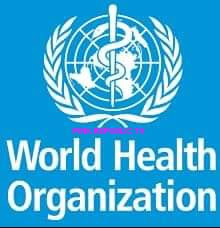160 Million Nigeriams At Risk Of Yellow Fever -WHO
The World Health Organization, WHO, says out of Nigeria’s population of around 200 million people,160 million people are at risk of yellow fever making up around 25% of all the people at risk of the disease in Africa.
According to the Medical Officer for the World Health Organization, Nigeria, Dr Anne Eudes Jean Baptiste, yellow fever is a virus transmitted by infected mosquitoes and it is dangerous because a small percentage of patients will go through a more toxic phase of the disease as they will experience fever, have system failure, mainly in the kidney and liver.
She said half of them may die within 7 to 10 days, after experiencing bleeding from the mouth, nose and eyes.
The Director General of the Nigeria Center for Disease Control, Dr Ifedayo Adetifa, said they have strengthened surveillance considerably by having reference laboratories in the country that have been strengthened, and are being supported and assessed to ensure they are meeting all the performance parameters in terms of sample collection and referral to the reference labs in Abuja.
According to the Director General, despite the COVID-19 pandemic, they have given out over 66 million doses in 2020 and 2021 to protect people from yellow fever outbreaks, saying the achievement was possible through routine immunization, as well as mass vaccination campaigns that identify gaps in the population and proactively target vulnerable communities.”
Dr Adetifa who features in in documentary to roll-out vaccination campaign in Taraba State and bring to light the global effort required to keep Nigerians safe, gave the actual number for preventive and reactive mass vaccination campaigns at 45 million during the COVID-19 pandemic.
Two new films showing the impact of yellow fever outbreaks in Taraba State, and the global efforts to eliminate yellow fever epidemics by the year 2026 have been commissioned by the Eliminate Yellow Fever Epidemics Strategy or EYE whose goal is to eliminate yellow fever epidemics by 2026, through a single-shot vaccine that gives lifelong immunity, and aims to protect almost one billion people in Africa and the Americas.
Muhammed Awal, a father of five from Taraba State, who featured in one of the films explained how he lost his second child to yellow fever, saying it was a very traumatising experience for him and his family
“We rushed the child to hospital when he started showing symptoms of the disease, and he died two to three days after, because his internal organs had been very damaged.”
In 2016, deadly outbreaks of yellow fever in Angola and the Democratic Republic of the Congo, with spread to China, put the African continent on notice for this disease.
The EYE Strategy, a partnership between the World Health Organization, UNICEF and Gavi, the Vaccine Alliance, was set up in response and identified Nigeria as a high-risk country.
Home to some of the world’s most densely populated cities, Nigeria is at risk of both urban and sylvatic (jungle) exposure to the disease. Sylvatic exposure is the transmission of yellow fever from mosquitos that have bitten animals and non-human primates. Workers in mining and agriculture are particularly vulnerable to this type of transmission.
In 2017, there was a resurgence in yellow fever in Nigeria after 15 years. This was due to gaps in detection of the disease rather than lack of transmission of the virus and the cyclical nature of sylvatic transmission but surveillance and laboratory testing have been strengthened, and improved, information about the distribution of the disease in humans has become available.




Comments
Post a Comment